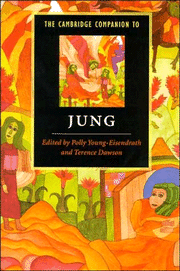Book contents
- Frontmatter
- Introduction
- Part 1 Jung's ideas and their context
- Part 2 Analytical psychology in practice
- Part 3 Analytical psychology in society
- 11 Gender and contrasexuality
- 12 A Jungian analysis of Homer's Odysseus
- 13 Jung, literature, and literary criticism
- 14 Jung and politics
- 15 Jung and religion
- Glossary
- Index
- References
14 - Jung and politics
from Part 3 - Analytical psychology in society
Published online by Cambridge University Press: 28 May 2006
- Frontmatter
- Introduction
- Part 1 Jung's ideas and their context
- Part 2 Analytical psychology in practice
- Part 3 Analytical psychology in society
- 11 Gender and contrasexuality
- 12 A Jungian analysis of Homer's Odysseus
- 13 Jung, literature, and literary criticism
- 14 Jung and politics
- 15 Jung and religion
- Glossary
- Index
- References
Summary
Jung sometimes described the relationship between the ego and the unconscious as a power struggle (CW 9.i,paras. 522-523; CW 7, paras. 342 and 381). In this struggle, when an unconscious complex takes over the ego, there is “possession” (see Sandner and Beebe, 1984, p. 310; CW 7, p. 224). When the ego takes over from the unconscious certain attributes which belong to the Self, there is “inflation” (CW 7, pp. 228-229). Jung compared the progressive transformation of this power struggle in the individuation process to a sequence of political regimes. He described the initial unconscious unity of the psyche as the “tyranny of the unconscious.” The situation in which the ego is predominant he described as “a tyrannical oneparty system.” And when the ego and the unconscious “negotiate” on the basis of “equal rights,” the relation resembles a “parliamentary democracy” (CW 18, p. 621).
- Type
- Chapter
- Information
- The Cambridge Companion to Jung , pp. 281 - 295Publisher: Cambridge University PressPrint publication year: 1997
References
- 1
- Cited by



